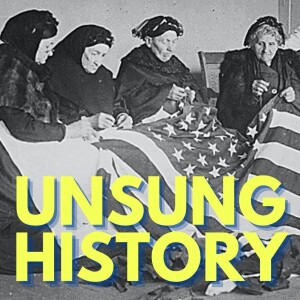
In the decades following the Civil War, African Americans reliably voted for the Republican Party, which had led the efforts to outlaw slavery and enfranchise Black voters; and white southerners reliably voted for the Democratic Party. When Black voters started to vote for Democratic candidates in larger numbers, starting with the 1936 re-election of FDR, whose New Deal policies had helped poor African Americans, Republicans began to turn their sights toward white Southern voters. By the 1964 Presidential election, Republican Barry Goldwater was actively courting those voters, winning five states in the deep South, despite his otherwise poor showing nationwide. Republican Richard Nixon successfully refined the strategy in his 1968 defeat of Democrat Hubert Humphrey. In the following decades, the Republican Party continued to employ the Southern Strategy, eventually leading to a complete realignment of the parties.
Joining me for a deep dive on the Southern Strategy is Dr. Kevin M. Kruse, Professor of History at Princeton University, author of several books on the political and social history of twentieth-century America, and co-editor with fellow Princeton History Dr. Julian E. Zelizer of Myth America: Historians Take on the Biggest Legends and Lies about Our Past.
Our theme song is Frogs Legs Rag, composed by James Scott and performed by Kevin MacLeod, licensed under Creative Commons. The episode image is a photograph of Richard Nixon campaigning in 1968; it is in the public domain and available via Wikimedia Commons. The mid-episode audio is the "Go, Go Goldwater" radio jingle produced by Erwin Wasey, Ruthrauff and Ryan, Inc. (EWR & R) from the 1964 presidential campaign; it is widely available on YouTube and is sampled here for educational purpose.
Additional Sources:
- To Make Men Free: A History of the Republican Party, by Heather Cox Richardson, Basic Books, 2021.
- “The Kansas-Nebraska Act,” United States Senate.
- “Missouri Compromise (1820),” National Archives.
- “Whig Party,” History.com, Originally Published November 6, 2009, Last Updated July 29, 2022.
- “Republican Party founded,” History.com, Originally Published February 9, 2010; Last Updated March 18, 2021.
- “What we get wrong about the Southern strategy,” by Angie Maxwell, The Washington Post, July 26, 2019.
- “Exclusive: Lee Atwater’s Infamous 1981 Interview on the Southern Strategy,” by Rick Perlstein, The Nation, November 13, 2012.
- “How the Southern Strategy Made Donald Trump Possible,” by Jeet Heer, The New Republic, February 18, 2016.
- “Paul Manafort's role in the Republicans' notorious 'Southern Strategy,'” by Sue Sturgis, Facing South, November 3, 2017.
- “Candace Owens wrongly called GOP’s Southern strategy a ‘myth,’” by Colby Itkowitz, The Washington Post, April 9, 2019.
Advertising Inquiries: https://redcircle.com/brands
More Episodes
 2024-10-21
2024-10-21
 2024-10-14
2024-10-14
 2024-09-23
2024-09-23
 2024-09-09
2024-09-09
 2024-09-02
2024-09-02
 2024-08-26
2024-08-26
 2024-08-19
2024-08-19
 2024-08-05
2024-08-05
 2024-07-29
2024-07-29
 2024-07-22
2024-07-22
 2024-06-17
2024-06-17
Create your
podcast in
minutes
- Full-featured podcast site
- Unlimited storage and bandwidth
- Comprehensive podcast stats
- Distribute to Apple Podcasts, Spotify, and more
- Make money with your podcast
It is Free
- Privacy Policy
- Cookie Policy
- Terms of Use
- Consent Preferences
- Copyright © 2015-2024 Podbean.com






